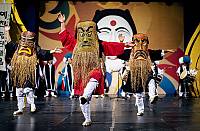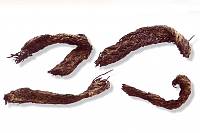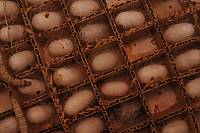
Discover the newly inscribed elements on the 2003 Convention Lists!
f Good Safeguarding Practices, including ‘Al Sadu Educational Programme: Train the trainers in the art of weaving’ in Kuwait and the ‘Portuguese-Galician border ICH: a safeguarding model created by Ponte…nas ondas!’ in Portugal and Spain. UNESCO’s Intangible Cultural Heritage Lists now feature 678 elements corresponding to 140 coun... international
1 December 2022
14.COM 3.BUR : Electronic Bureau consultation
Intangible Cultural Heritage in Need of Urgent Safeguarding: Tais, traditional textile is a form of weaving tradition commonly practiced by women in Timor-Leste. Women weavers are committed to passing on the related knowledge and techniques to future generations, yet major challenges including inadequate space for the production of Tais, financial...5 August 2019
Electronic consultation
Sericulture and silk craftsmanship of China
encompasses planting mulberry, raising silkworms, unreeling silk, making thread, and designing and weaving fabric. It has been handed down within families and through apprenticeship, with techniques often spreading within local groups. The life cycle of the silkworm was seen as representing the life, death and rebirth of human beings. In the ponds... China
Both women and men are involved in the production process, with women being in charge primarily of weaving and producing cotton yarn and men producing the loom and other relevant tools. Each community of producers is led by a chief weaver, who is responsible for regulating the standards of production, resolving conflict among weavers, and establis...6 December 2024
Asunción
its second report on the status of the element ‘Traditional Li textile techniques: spinning, dyeing, weaving and embroidering’, inscribed in 2009 on the List of Intangible Cultural Heritage in Need of Urgent Safeguarding, which was initially due for submission by 15 December 2017; Takes note of the efforts described in the report submitted by C...18 December 2021
Online
Cambodia reorienting its methods of inventorying living heritage
the School of Fine Arts and two local communities, with forms of ICH documented including traditional weaving processes, martial arts skills and techniques, and performing arts. Participants learned, through hands-on training, field-based techniques of interviewing and audio-visual recording. A visit was also conducted to the Eco-Global Museum (...14 February 2013 - 21 February 2013
Phnom Penh
Traditional art and symbolism of Kelaghayi, making and wearing women’s silk headscarves
jan: the city of Sheki and the Basgal settlement. Kelaghayi making consists of several stages: fabric weaving, dyeing and woodblock decoration. Weavers choose thin silk threads from sericulture producers and weave fabrics on looms and then boil and dry them to make square-shaped cloths. Using vegetable substances, masters then dye the cloths variou... Azerbaijan
encompasses planting mulberry, raising silkworms, unreeling silk, making thread, and designing and weaving fabric. It has been handed down within families and through apprenticeship, with techniques often spreading within local groups. The life cycle of the silkworm was seen as representing the life, death and rebirth of human beings. In the ponds...2 October 2009
Abu Dhabi
, its third report on the status of the element ‘Traditional Li textile techniques: spinning, dyeing, weaving and embroidering’, inscribed in 2009 on the List of Intangible Cultural Heritage in Need of Urgent Safeguarding; Takes note of the efforts described in the report submitted by China to safeguard the element, in particular through securi...3 December 2022
Rabat
ocess, however, is quite complex and time-consuming and entails preparing and dyeing the cotton and weaving the material. Although men may participate in the process by gathering plants to dye the cotton and making the equipment, the production of Tais is a role reserved for women, who are also responsible for passing the knowledge and skills on to...18 December 2021
Online



